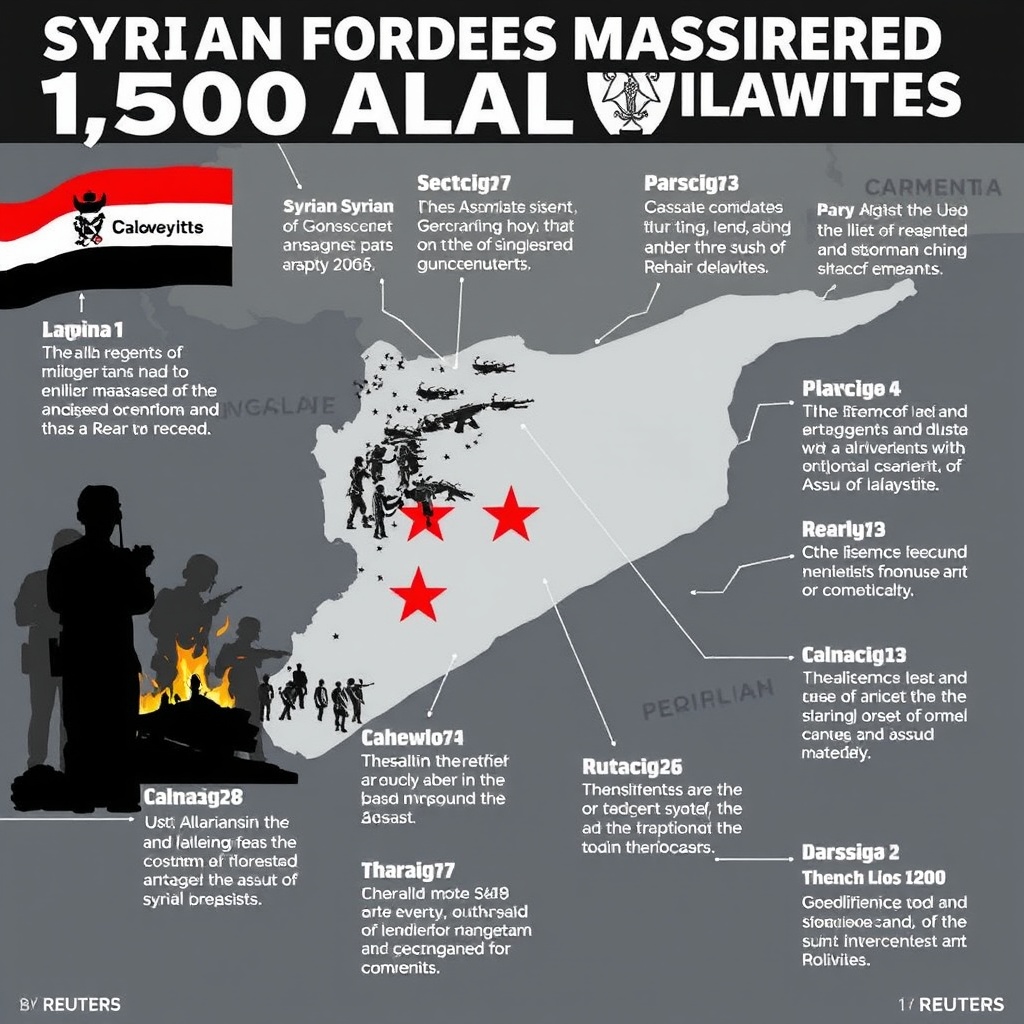Introduction
The Syrian Civil War, which began in 2011, has been one of the most devastating conflicts of the 21st century, resulting in countless human rights abuses, massive displacement of populations, and widespread destruction. A recent investigation by Reuters has shed light on a particularly horrific episode of violence, in which Syrian forces massacred approximately 1,500 Alawites, a minority sect in Syria. The chain of command for these atrocities is alleged to have led all the way to Damascus, the capital city of Syria and the seat of the government of President Bashar al-Assad. This article will delve into the details of the investigation, the historical context of the Syrian Civil War, and the implications of these findings for the pursuit of justice and accountability in Syria.
Background: The Syrian Civil War
The Syrian Civil War began as a peaceful uprising against the government of President Bashar al-Assad in March 2011, part of the broader Arab Spring movement that swept across the Middle East. However, the conflict quickly escalated into a full-blown civil war, with the government responding to protests with force and the opposition eventually taking up arms. The war has involved numerous factions, including the Syrian government, various rebel groups, extremist organizations like ISIS, and foreign powers such as Russia, Turkey, and the United States.
The conflict has had a profound impact on Syria, causing immense human suffering, destroying infrastructure, and leading to one of the largest refugee crises in recent history. Estimates suggest that over 500,000 people have been killed, and millions have been displaced, both within Syria and in neighboring countries. The war has also had significant regional and international implications, contributing to instability in the Middle East and beyond.
The Massacre of Alawites: Investigation Findings
The Reuters investigation into the massacre of approximately 1,500 Alawites is a stark reminder of the brutality and sectarian nature of the conflict. The investigation identified 40 distinct sites of killings, looting, and arson that occurred over three days, following an incident involving an Assad loyalist. These acts of violence were not random or spontaneous but rather part of a coordinated campaign of sectarian massacres.
The investigation's findings are based on extensive research, including interviews with witnesses, survivors, and individuals with knowledge of the events. The evidence suggests that the chain of command for these atrocities led to the highest levels of the Syrian government, implying a level of planning and approval from Damascus. This is particularly significant because it suggests that the massacres were not the actions of rogue elements or local militias but were instead part of a broader strategy of repression and violence employed by the Syrian government.
Implications and Pursuit of Justice
The findings of the Reuters investigation have significant implications for the pursuit of justice and accountability in Syria. The evidence of a chain of command leading to Damascus underscores the need for international action to hold those responsible for these atrocities accountable. This could involve investigations by international bodies such as the United Nations, the use of universal jurisdiction laws by countries to prosecute Syrian officials, and the imposition of sanctions on individuals and entities implicated in human rights abuses.
Moreover, the investigation highlights the importance of documenting human rights abuses in conflict zones. In the context of the Syrian Civil War, where access is often limited and dangerous, the work of journalists, investigators, and human rights organizations is crucial in uncovering the truth and pushing for accountability.
The international community has a role to play in supporting these efforts, through diplomatic pressure, legal action, and support for organizations working on the ground. The pursuit of justice is not only a moral imperative but also a necessary step towards healing and reconciliation in Syria. Without accountability, it will be challenging to build a stable and inclusive peace, as impunity can foster a culture of violence and undermine trust in institutions.
Conclusion
The massacre of approximately 1,500 Alawites, as uncovered by the Reuters investigation, is a grim reminder of the horrific human cost of the Syrian Civil War. The evidence pointing to a chain of command that leads to Damascus underscores the complexity and gravity of the situation, highlighting the need for a robust international response to pursue justice and accountability.
As the world looks to the future of Syria, it is essential to remember the victims of these atrocities and to work towards a future where such abuses are never repeated. This involves not only holding perpetrators accountable but also supporting the rebuilding of Syrian society, fostering reconciliation, and ensuring that the rights and dignity of all Syrians are respected and protected.
The path forward will be challenging, requiring sustained international engagement, a commitment to justice and human rights, and a willingness to support the Syrian people in their quest for peace and stability. However, it is through such efforts that we can hope to build a brighter future for Syria, one that is founded on the principles of justice, equality, and respect for human dignity.


Leave a comment